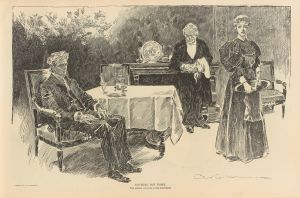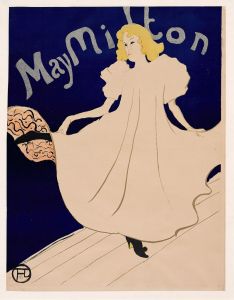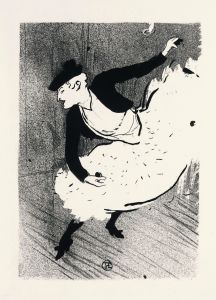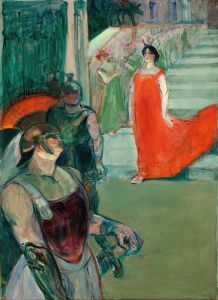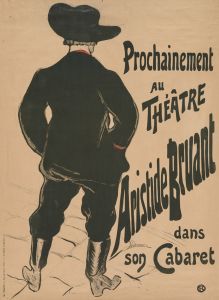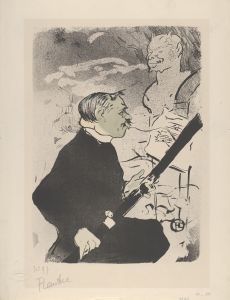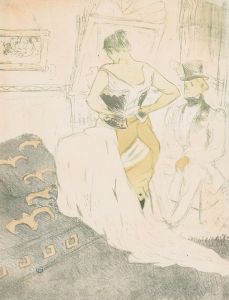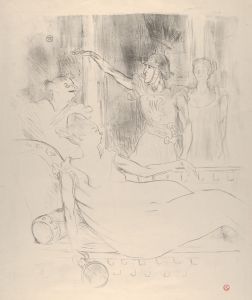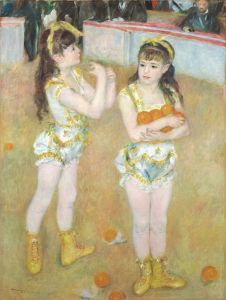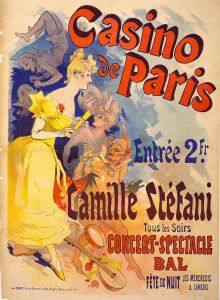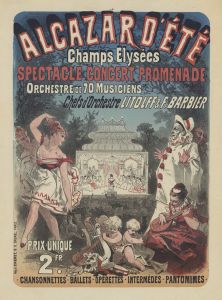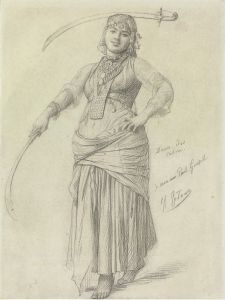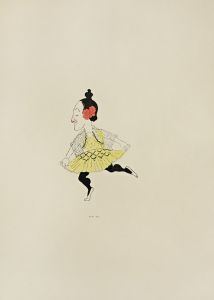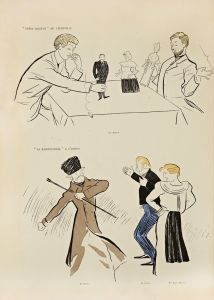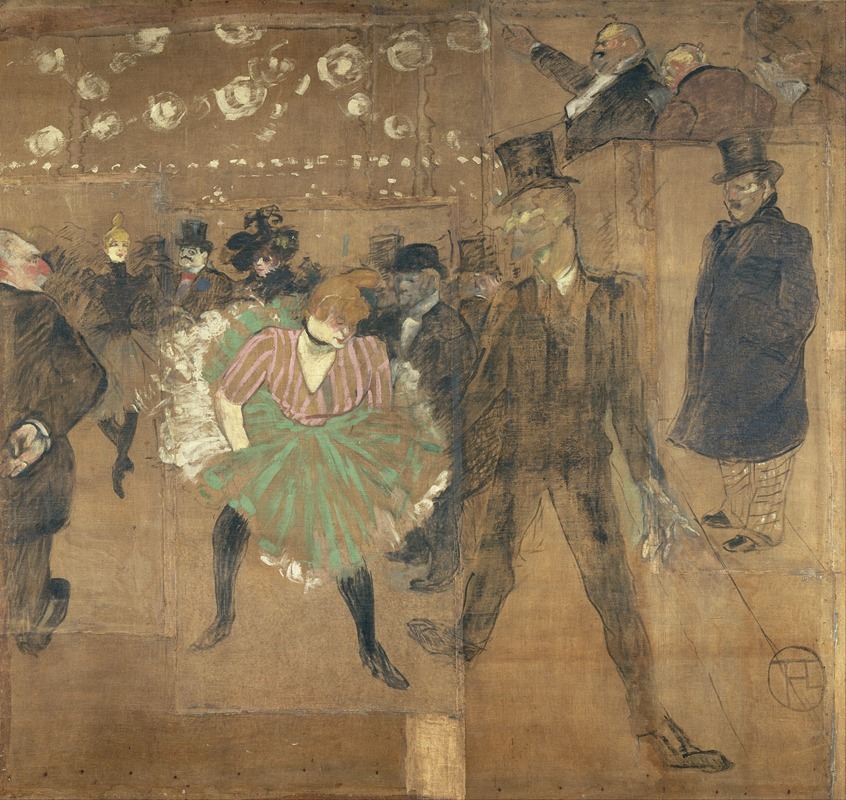
Panneaux pour la baraque de la Goulue, à la Foire du Trône à Paris
A hand-painted replica of Henri de Toulouse-Lautrec’s masterpiece Panneaux pour la baraque de la Goulue, à la Foire du Trône à Paris, meticulously crafted by professional artists to capture the true essence of the original. Each piece is created with museum-quality canvas and rare mineral pigments, carefully painted by experienced artists with delicate brushstrokes and rich, layered colors to perfectly recreate the texture of the original artwork. Unlike machine-printed reproductions, this hand-painted version brings the painting to life, infused with the artist’s emotions and skill in every stroke. Whether for personal collection or home decoration, it instantly elevates the artistic atmosphere of any space.
Henri de Toulouse-Lautrec, a prominent French artist of the late 19th century, created a series of decorative panels titled Panneaux pour la baraque de la Goulue, à la Foire du Trône à Paris (Panels for the Booth of La Goulue, at the Foire du Trône in Paris) in 1895. These works were commissioned by Louise Weber, better known as "La Goulue," a famous can-can dancer who had been a star performer at the Moulin Rouge. By the mid-1890s, La Goulue sought to establish herself independently and set up a booth at the Foire du Trône, a popular annual fair in Paris.
The panels were designed to serve as advertisements and decorations for La Goulue's booth, where she performed and showcased her talents. Toulouse-Lautrec created two large-scale works for this purpose, depicting scenes that celebrated the lively and provocative spirit of Parisian nightlife. The panels are notable for their bold colors, dynamic compositions, and the artist's characteristic style, which combined elements of Impressionism, Post-Impressionism, and Art Nouveau.
One of the panels features La Goulue herself, depicted in a confident and flamboyant pose, reflecting her reputation as a charismatic and daring performer. The other panel includes a depiction of a lion tamer, which may have been intended to evoke the exotic and theatrical atmosphere of the fair. Both works highlight Toulouse-Lautrec's ability to capture the energy and personality of his subjects, as well as his keen observation of the social and cultural milieu of his time.
The panels were painted on canvas and are among the largest works Toulouse-Lautrec ever created. They demonstrate his mastery of composition and his innovative use of color and line. Despite their functional purpose as fairground decorations, the panels are considered significant works of art in their own right and are celebrated for their artistic and historical value.
Today, the panels are housed in the Musée d'Orsay in Paris, where they are preserved as important examples of Toulouse-Lautrec's oeuvre and as artifacts of the vibrant cultural scene of late 19th-century Paris. They provide insight into the artist's relationship with La Goulue and his engagement with the popular entertainment of his era.





